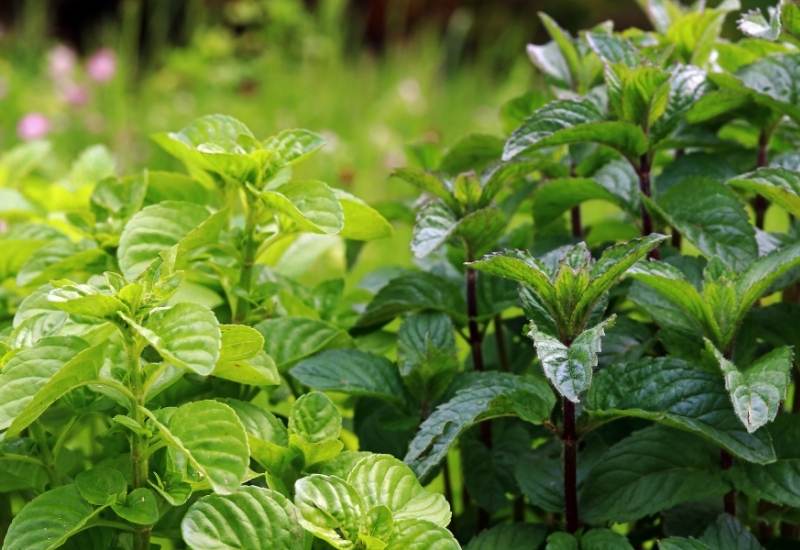
The smell of mint is one of the easiest scents to recognize, used in dozens of candies and holiday desserts. Most recognize spearmint and peppermint, but did you know that hundreds of types of mint plants exist and grow well in herb gardens. Gardeners can grow different varieties of mint such as chocolate or apple mint – yum!
When you decide which types of mint plants to grow, consider how you want to use them. Some mint plant varieties are better for culinary purposes, and others work better for medicinal purposes.
In this list, we look at several of the most popular mint varieties to grow in your herb garden and how you can grow and use the unique scents and flavors. You’ll be surprised by the extensive range of flavors that you can grow.
How Grow Different Mint Plant Varieties In Your Garden
Before diving into all types of mint plants, let’s look at some of the basic requirements to grow mint.
Gardeners love growing mint and for obvious reasons. It’s undoubtedly one of the easiest herbs to grow, requiring little to no special care.
Once planted, mint spreads vigorously, taking over surrounding areas. For that reason, it’s best to grow mint in containers unless you have space to dedicate an entire garden bed for its growth.
Here are the basic requirements of mint plants. Most types of mint require these same conditions, making it easy to grow several varieties at once.
19 Different Types Of Mint Plants For Your Herb Garden
Lamiaceae or Labiatae are the scientific, botanical name for the family of flowering plants that we call mint.
All mint family plants are aromatic but have unique scents that make them identifiable. The mint family also includes other aromatic herbs such as basil, sage, oregano, and lavender.
Currently, there are over 7,500 varieties of mint plants, including trees, shrubs, and ornamental plants. The most common species are peppermint, spearmint, and chocolate mint, but there are many more easy-to-grow mint varieties that belong in your herb garden.
No matter the type that you grow, understand that all are invasive, taking over entire garden beds with ease. Gardeners often grow mint plants in containers due to their rapid spread.
Here is a list of different types of mint plants that belong in your herb garden.
1. Peppermint

Without a doubt, the most common type of mint is peppermint. It’s a blend of water mint and spearmint, creating a strong taste yet sweet aroma.
Peppermint has a cool, robust flavor, which is why it’s used in candies, desserts, and teas. It also may be added to sweet or savory dishes.
Peppermint vigorously spreads across garden beds, spreading by runners in every direction rather than seeds. Its rapid growth has led to peppermint growing wild throughout regions in the United States and other world areas.
These mint varieties have dark green leaves with reddish veins. The leaves feel slightly fuzzy and produce purple flowers around the stem in thick, blunt spikes.
Here are a few things to remember when growing peppermint in your garden.
2. Spearmint
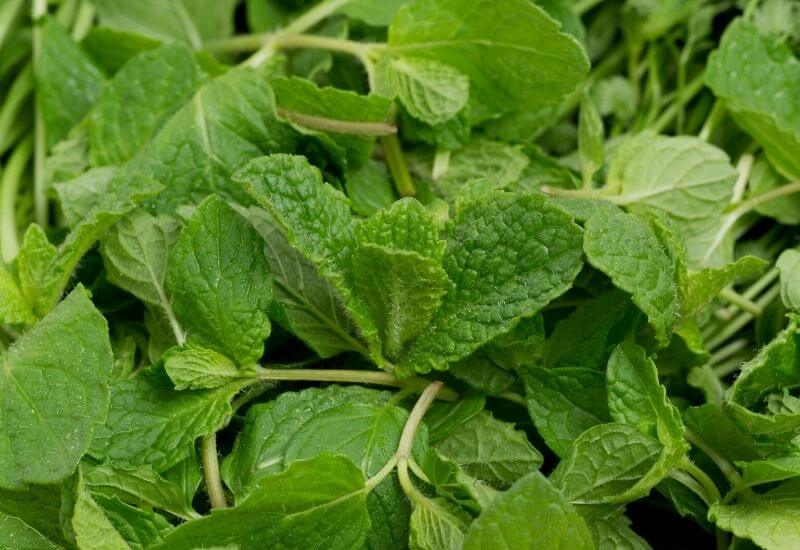
The second most common mint plant is spearmint, sometimes called common mint. It’s most commonly used for culinary purposes. Spearmint has narrow, green leaves with a pleasant scent that’s milder than peppermint.
Spearmint plants have long, narrow leaves and pink or white flowers on slender spikes. The name “spearmint” came from the leaves resembling a spear. Like other varieties, spearmint spreads out by invasive runners in all directions, so containers are perfect.
This type of mint is often called lamb mint because it’s used in lamb and potato dishes. If you’ve ever had a mint jelly with roasted lamb, you ate spearmint. Spearmint is also used to create toothpaste, confections, shampoos, and soaps.
Growing spearmint is relatively easy. Here are a few things to know.
3. Apple Mint
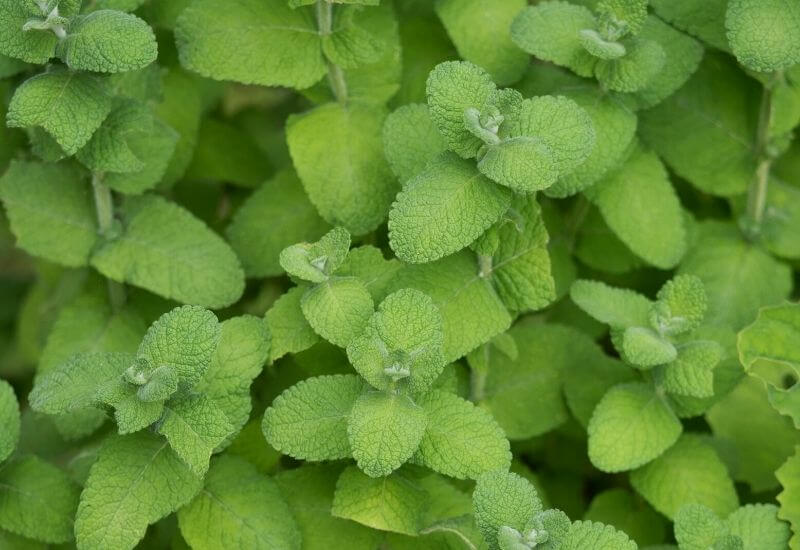
Sometimes referred to as wooly mint or pineapple mint, apple mint has light green, round foliage with small hairs on top and pale pink or white flowers that appear from early to mid-summer. What makes apple mint unique is the fruity aftertaste that is similar to the taste of apples.
Apple mint is a cold-hardy plant, so it survives in lower temperatures than other varieties. It’s a large plant that grows up to three feet tall and spreads by runners.
Due to its size and attractive flowers, many gardeners consider apple mint an ornamental plant, but it has culinary purposes.
Apple mint is used in teas and as garnishments in salads or other dishes. Since it has both minty and fruity flavors, it’s often used to make apple mint jelly and apple mint couscous. You also can make a yummy fruity, mint-flavored tea.
Here’s how to grow apple mint in your herb garden.
4. Banana Mint

Never heard of banana mint? That’s a shame! It’s a fruity herb with an aroma that is close to a banana.
Bees love banana mint and the small, lilac-colored flowers that appear throughout the summer.
The bright lime-green leaves are heavily scented and spread across the garden. The flowers make it an attractive border in a floral garden.
Banana mint is most often used in desserts, such as cookies, muffins, ice creams, and fruit salads. When eaten, this herb leaves an aftertaste similar to bananas. That’s why it’s used in so many drinks and desserts.
Here are some things to know while growing banana mint.
5. Pennyroyal Mint
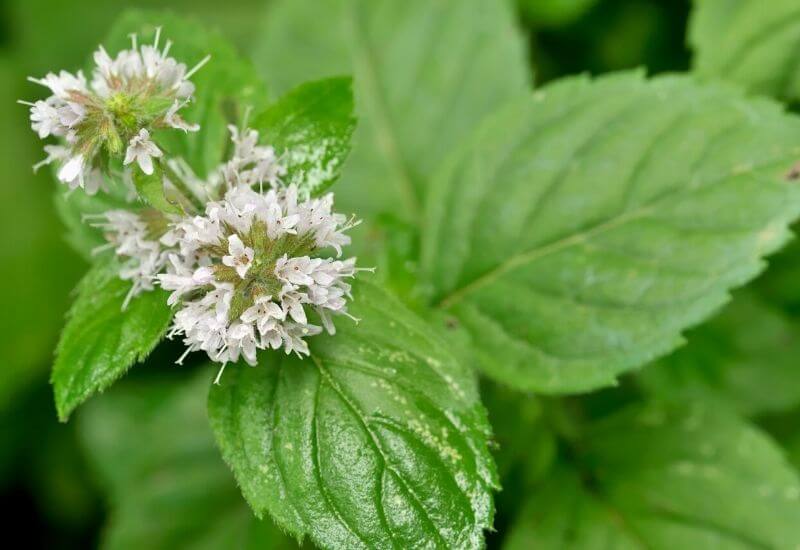
Pennyroyal has a long history, dating back to ancient Rome, where recipes often included this type of mint and other herbs such as oregano and coriander.
Nowadays, it’s rarely used in culinary dishes but is known for its medicinal and insect repelling properties. Adding a few plants throughout your vegetable garden wards off problematic pests.
Pennyroyal grows tiny leaves with pale blue or lavender flowers. It’s a creeping variety, only reaching six to 12 inches tall and spreading wide.
For those who grow herb gardens, pennyroyal is a must-have herb. We know it has properties to assist with gastrointestinal problems, such as constipation and hemorrhoids. It also can be used for skin conditions and toothaches.
Here are a few facts about growing pennyroyal.
6. Chocolate Mint
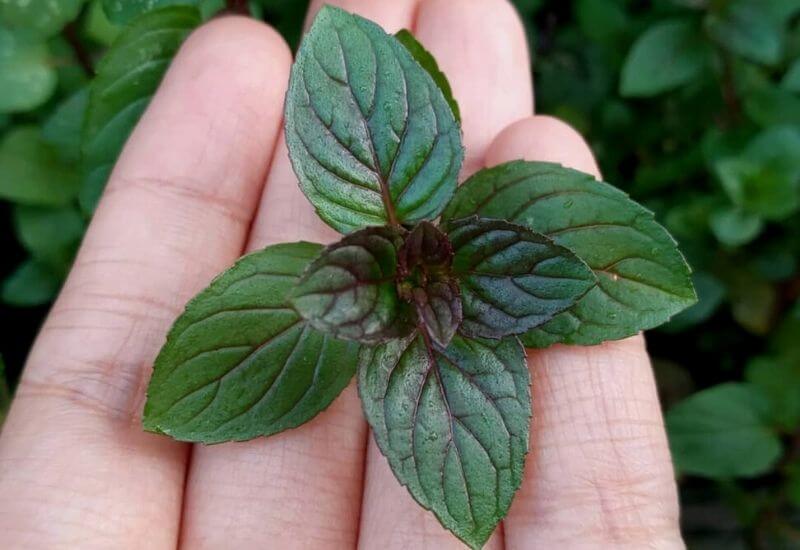
Is there any combination more delicious than chocolate and mint? Chocolate mint is known for its minty chocolate-flavored aroma.
Throughout the summer, chocolate mint grows round spear-shaped foliage with lavender flowers. It has slightly brown stems and brown markings on the leaves, smelling somewhat like chocolate.
Use chocolate mint in milkshakes, desserts, and ice creams. Chocolate mint also makes a delicious cup of hot tea. Chefs use it in pudding and baked goods to add a chocolate-mint flavor or blend it into whipped cream.
Here’s how to grow chocolate mint in your garden.
7. Pineapple Mint
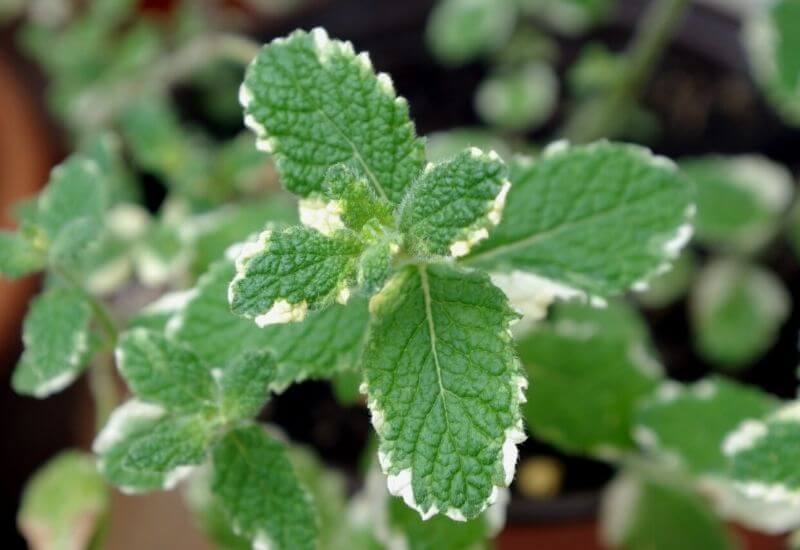
Here is another fruity-mint variety to add to your garden. Pineapple mint stands out in your garden with its green leaves and white edging along with white or pink flowers appearing in the summer.
The coloring makes it a popular ornamental plant grown in USDA zones five through nine. Gardeners in zone four can grow pineapple mint with protection.
As the name suggests, pineapple mint has a sweet, citrusy scent that makes it popular for medicinal and culinary purposes. Add some crushed leaves to fruit salads, jellies, or teas. When dried, it can be added to fruit-based potpourri.
Pineapple mint also has anti-inflammatory properties, so it helps to ease gastrointestinal problems and arthritis. It also reduces acid reflux.
Here are a few things about growing pineapple mint.
8. Lavender Mint
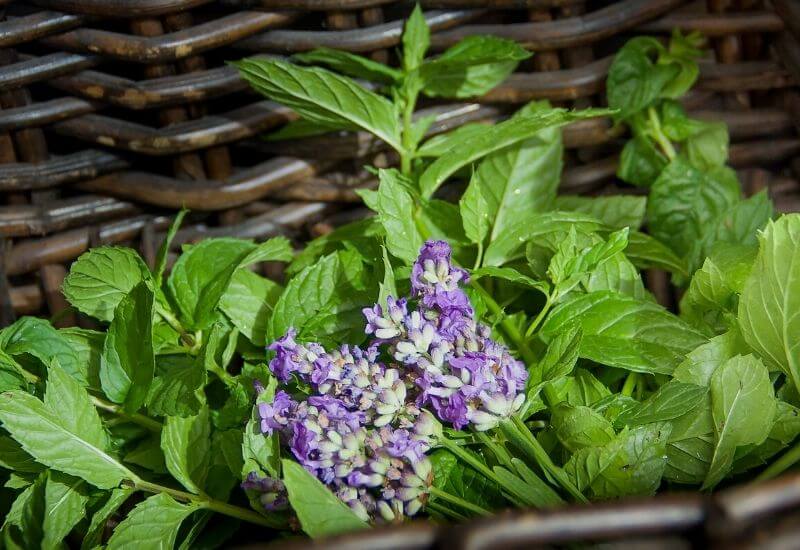
Lavender mint is one of the most beautiful types of mint plants, primarily grown for decorative purposes. The plants reach up to two feet tall rather than creeping low on the ground. It forms in a sort of hedge or row that is ideal for the back of gardens.
Lavender mint is a versatile variety to grow because it has medicinal properties as well as culinary purposes. It’s regularly used in teas, shampoos, creams, and lip balms. In the kitchen, lavender mint enhances savory dishes’ flavor; toss some into soups, pasta, and salads.
Here are a few things to consider when growing lavender mint.
9. Grapefruit Mint
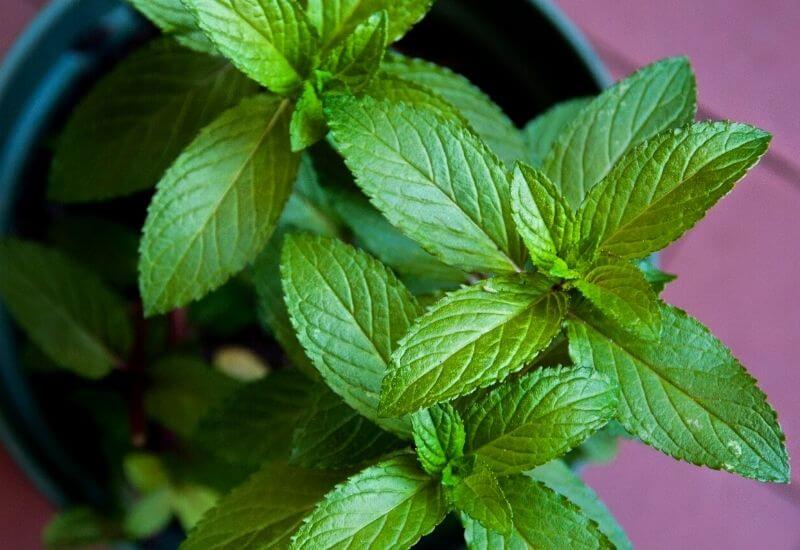
Do you love grapefruit? Grapefruit mint has a scent that is similar to grapefruit with mint mixed into it. The green leaves are fruity flavored and mix well with fruit-based desserts and recipes. Grapefruit mint also goes well with seafood and lamb.
This type of mint is an upright herb that reaches up to two feet tall with lavender flowers in the early fall.
It needs to be planted in a spot that receives four to five hours of sunlight. Grapefruit mint thrives in hardiness zones six through 11. In some cases, it’ll spread up to two feet wide, spreading the minty citrus scent everywhere.
Grapefruit mint produces a lot of leaves, and they can be stored and dried for months. This herb is delicious when added to fruit salads, chicken dishes, fish dishes, and anything with citrus flavors.
Here are some tips for growing grapefruit mint.
10. Horsemint

This type of mint reaches up to four feet tall, bearing flower spikes with pale pink or lilac-colored flowers. Horsemint is often called silver mint and used for more medicinal purposes than culinary. It makes a great addition to any medicinal garden.
Horsemint has a delicate lemony flavor that is great for savory dishes, as well as hot and cold teas. The lemon taste pairs well with chicken and fish. Some chefs use it to flavor lemon desserts or to create lemon-mint glazes.
Here are some facts for growing horsemint in your garden.
11. Corsican Mint
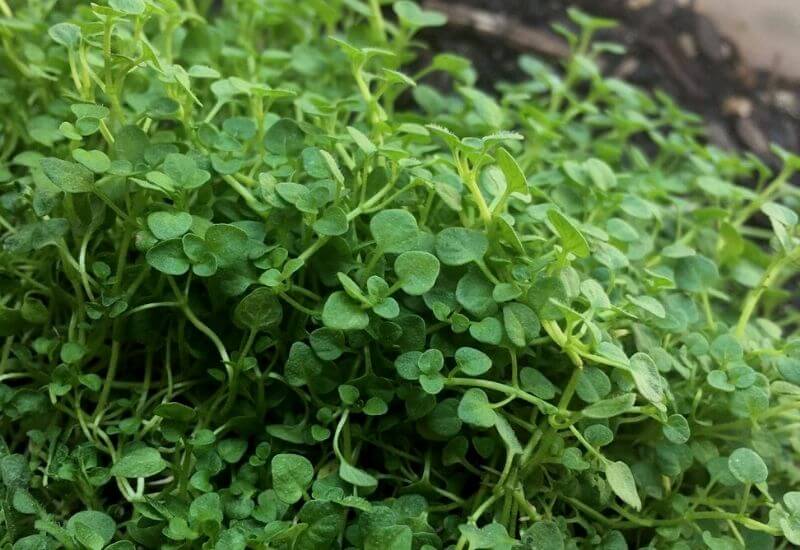
Native to Corsica, this mint variety is a low-growing, creeping type of mint, considered the smallest member of the entire family. Corsican mint has bright green leaves that are small and oval-shaped. When crushed, the leaves emit a strong scent.
Corsican mint is a popular bedding or border plant because you can step on it without killing the plant. It’s quite invasive, so be careful when it’s grown. It produces tiny mauve flowers that attract pollinators.
Consider planting Corsican mint near broccoli, cabbage, and cauliflower because it repels many of the common pests that bother these plants.
Corsican mint is best known as a flavoring for creme de menthe. Otherwise, it’s primarily used for medicinal purposes because of antiseptic properties and the ability to relieve flatulence.
Here are a few things to consider when growing Corsican mint.
12. Calamint
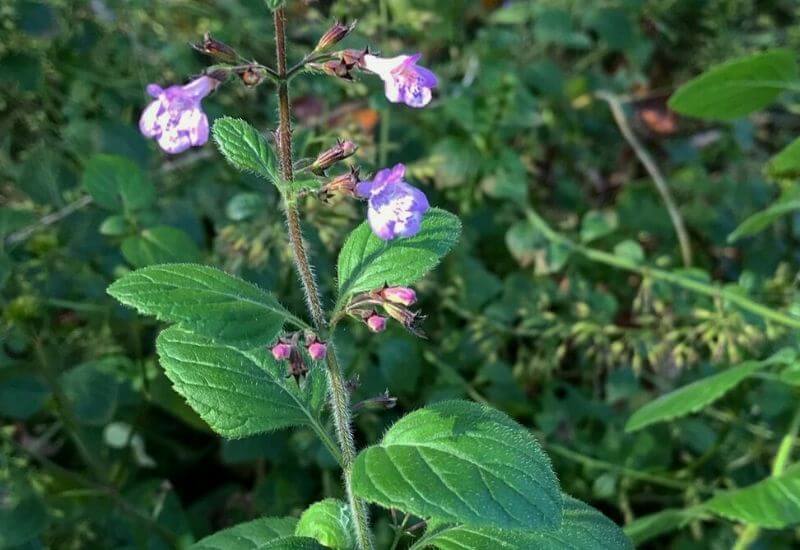
Many have never heard of calamint; it’s native to the United Kingdom. In the United States, gardeners in USDA zones five to nine can enjoy this variety. Calamint has large leaves with deep veins, fuzzy leaves, and thick stalks. It reaches up to two feet tall with light pink flowers throughout the late summer.
Calamint is considered a medicinal herb used for treating contusions and bruises because of its high menthol content.
It has culinary purposes, typically used as a seasoning for meat. Some replace basil or thyme with calamint.
Here are a few things to know before growing calamint.
13. Catmint
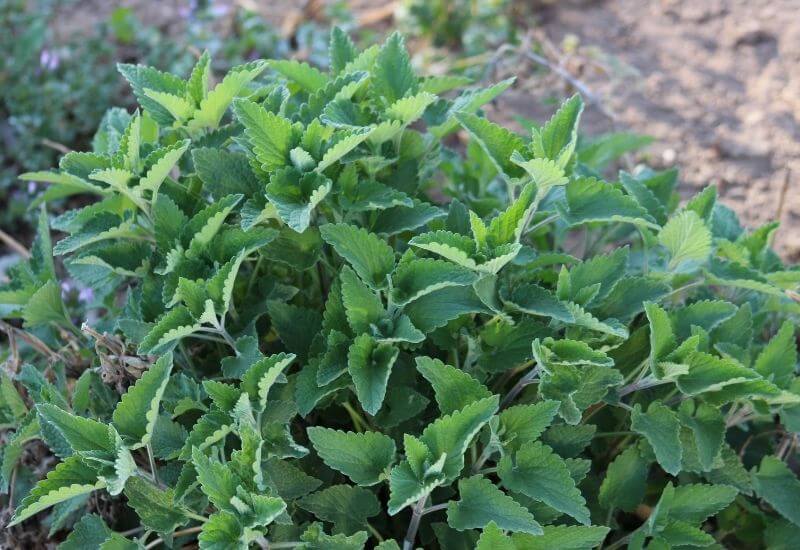
Don’t confuse catmint with catnip. Catmint is an ornamental herb that gardeners plant in their vegetable gardens to repel pests. It also acts as an edging plant along borders because it has grey-green leaves and blue-lavender flowers. Since it repels pests, using it as an edging plant in your vegetable garden makes sense.
Like catnip, catmint is beloved by felines; it contains a compound that gives cats a euphoric feeling. Humans enjoy using catmint; you can use every part of the plant, dried or fresh.
Leaves can be added to sauces and soups. Make an herbal tea to calm your nerves, relieve congestion, and reduce coughing.
Here are some things to know about growing catmint.
14. Licorice Mint
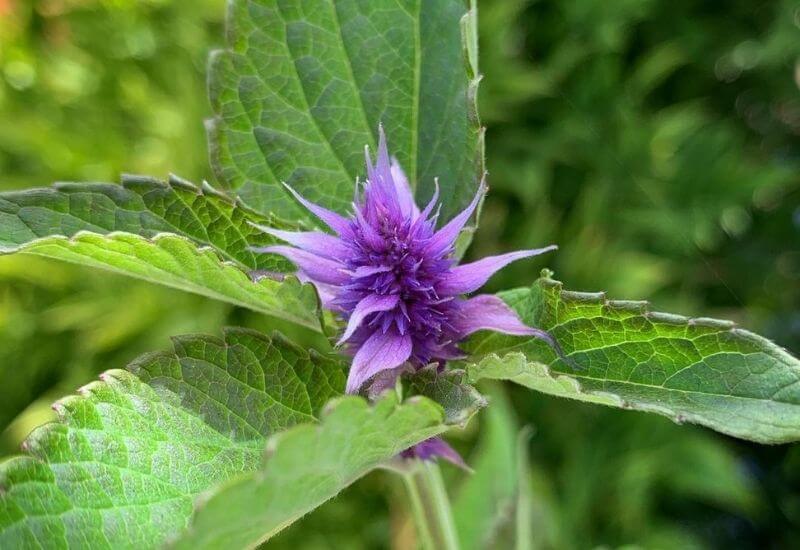
Here is one of the tallest varieties minting, growing up to four feet tall in proper conditions. Licorice mint produces lavender and white flowers that birds love because they’re full of bugs. Gardeners in USDA zones five to 11 can enjoy this herb variety.
As you might guess by the name, the leaves have a slightly sweet flavor that tastes a bit like actual licorice. It’s not too strong, so if licorice isn’t your favorite, it’s still an excellent culinary herb to add to your garden.
The most common way to use licorice mint is to make ice cream; it pairs well with fresh fruit. It also works when cooked with lean meats, such as chicken.
Here are a few things to know about growing licorice mint.
15. Basil Mint
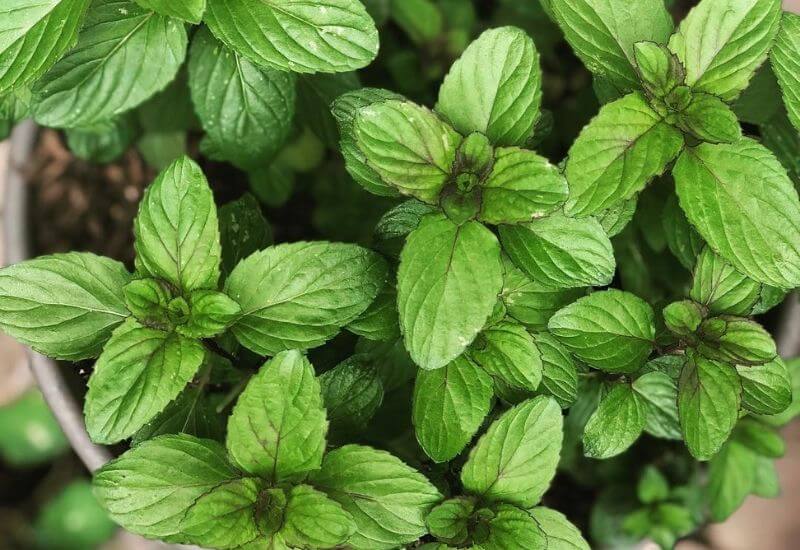
Basil is a hybrid type of mint that gardeners find is easy to grow and cultivate. As you might have guessed, basil mint has narrow leaves that produce a basil and mint aroma.
Basil mint is best used fresh, but it can be dried and stored. Expect the fragrance to last around six months.
Most use basil mint in pestos or fruit salads, and it also makes a fantastic herbal tea. Since basil mint has anti-inflammatory properties, it’s great for upset stomachs and headaches.
Here’s how to grow basil mint in your garden.
16. Ginger Mint
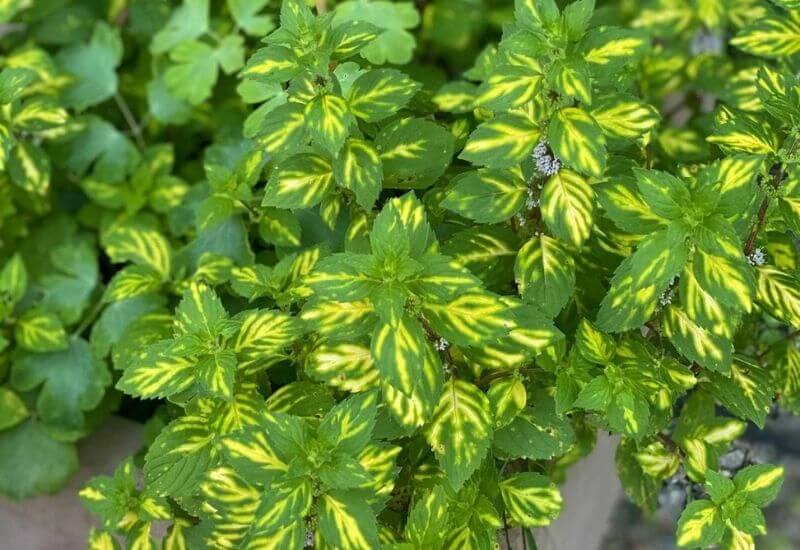
Known as Vietnamese mint, ginger mint is popular in Vietnamese cooking, often put in beef and chicken dishes.
It’s also known as slender mint or scotch mint; it’s a cross between cross mint and spearmint. Ginger mint smells similar to spearmint with a slight ginger-like subtle sent.
You can use ginger mint in more than dinner dishes. It’s a great addition to fruit salads, teas, and lemonade, or mix some dried ginger mint in butter for a nice spread over toast.
Here are a few things to keep in mind while growing ginger mint.
17. Watermint

As you might guess from its name, water mint is known for growing in waterways and near rivers. The foliage is oval and toothed with a strong aroma. This type of mint grows best in hardiness zones eight to 11; it’s not frost hardy.
Water mint is a gorgeous addition to any garden. The thick green leaves spread out over the water near streams or ponds, producing masses of purple and blue flowers that pollinators love.
Growing watermint requires space because it expands vigorously through runners. Since it thrives growing in moist areas, make sure the plant has the humidity and moisture needed for growth. Consider growing in pots to limit its spread.
While watermint has culinary purposes, it’s best known for its medicinal properties. It works to fight off bacteria if you crush fresh leaves and apply them to wounds.
A watermint balm relieves sore muscles, or dried leaves can be added to potpourri for aromatherapy.
Here’s how to grow watermint at home.
18. Egyptian Mint

Are you looking for a unique type of mint with a history behind it? Egyptian mint dates back to ancient Egypt – that’s right, thousands of years! Some historians argue that this is the actual mint used in the Bible.
Used as a culinary herb, Egyptian mint has a scent similar to apple mint and a flavor similar yet milder than peppermint and spearmint.
This plant has a strong, upright stem and fuzzy leaves. Since it reaches up to three feet tall, it’s best in pots or along the back of a garden.
In USDA zones eight and below, Egyptian mint is a perennial. It’s used in savory dishes and teas, but it’s also used as a skin toner.
While Egyptian mint is considered a wild variety, here are some tips for cultivating it in your garden.
19. Corn (Field) Mint
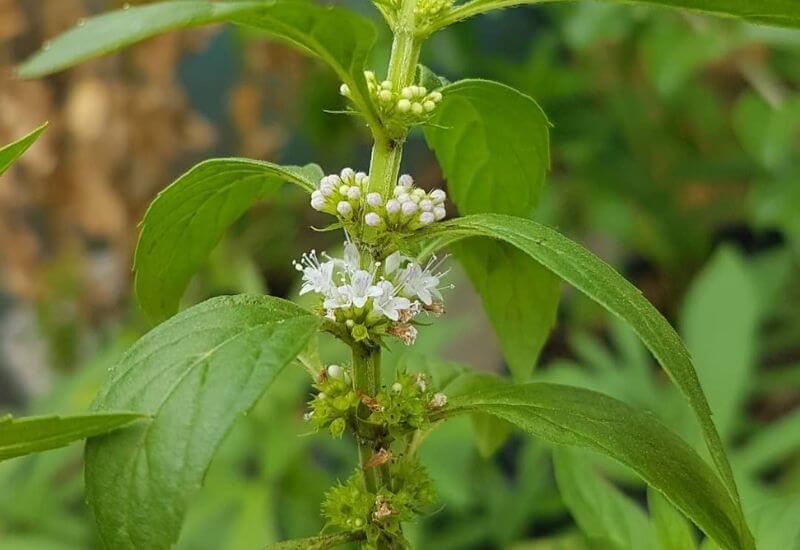
Those living in the United States might find corn mint on their property; it’s a wild mint native to this country. Corn mint grows between six and 18 inches tall with a square stem and small bunches of flowers every few inches.
Most people don’t use corn mint in culinary dishes, but it’s known as an herbal remedy for the common cold.
Chewing the fresh leaves clears up congestion and soothe coughs. Herbal teas made from the fresh leaves work as well.
Here are some considerations if you want to grow corn mint instead of harvesting it in the wild.
Try Growing Different Mint Plants
Who knew there were this many types of mint plants? Try adding a few of these mint varieties to your herb garden.
Whether you want to try new varieties for herbal remedies or flavor your favorite dishes, these mint varieties have you covered.

Written By
Bethany Hayes
Bethany is a suburban homesteader, growing over half of the vegetables, fruit, and herbs that her family of six needs each year. She raises chickens and homeschools her children. When she isn’t spending time tending to her garden, you can find her reading, crocheting, and canning.

I am trying to keep wild rabbits at bay using plantlife that they don’t like. I keep seeing “mint” but no information about what KIND of mint would detract bunnies. Please advise. Thanks!
Very interesting. Whets the appetite for more info. Now, to find sources for seeds or cuttings.
Thank you for putting this together. It was very helpful information.
19 best types of mint for your garden. So where are the Buy 19 different type of mint collection??????????????????????????????
Why make a suggestion and then not meet it?????
I had no idea we have so many types of mint. Any idea of where we can get a hold of these varieties ?